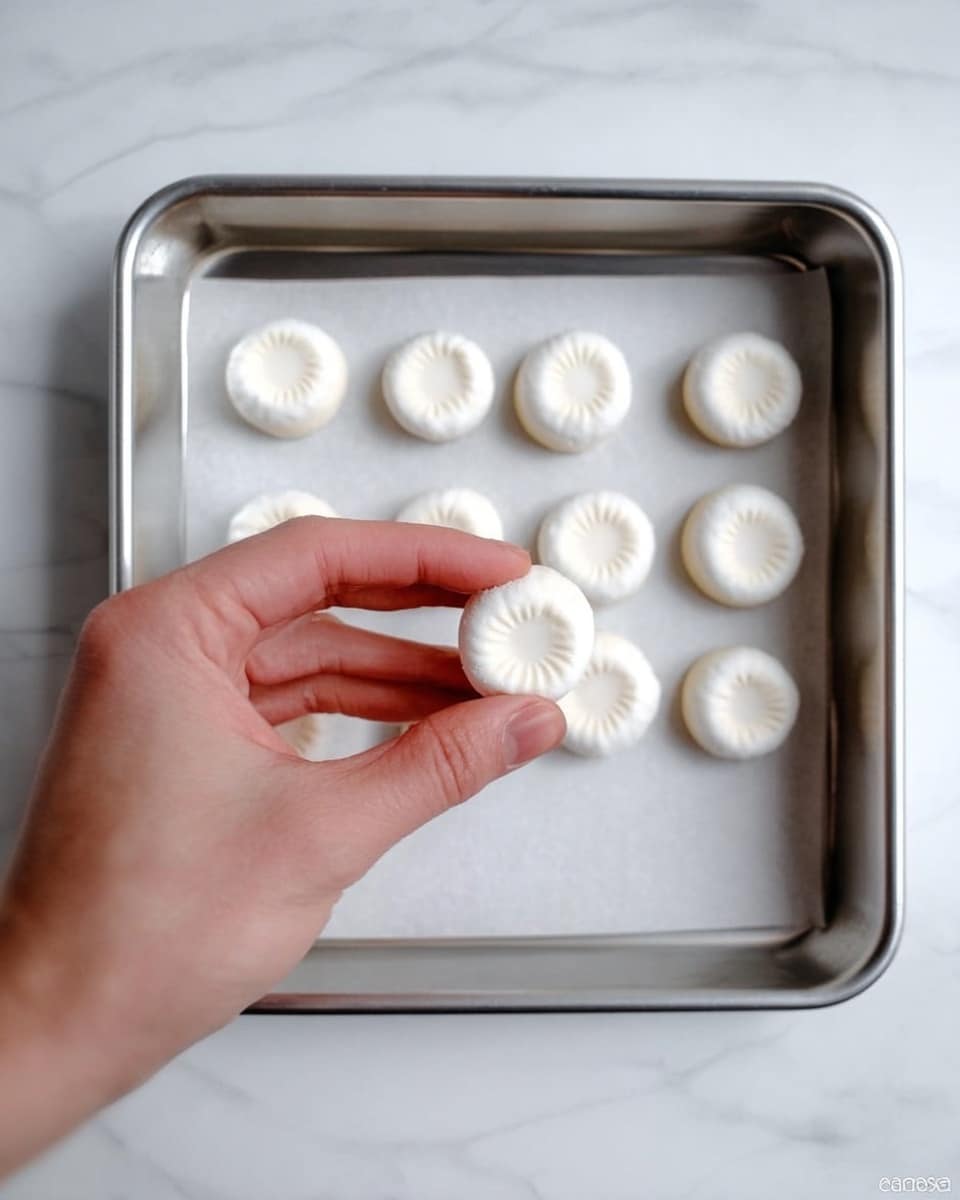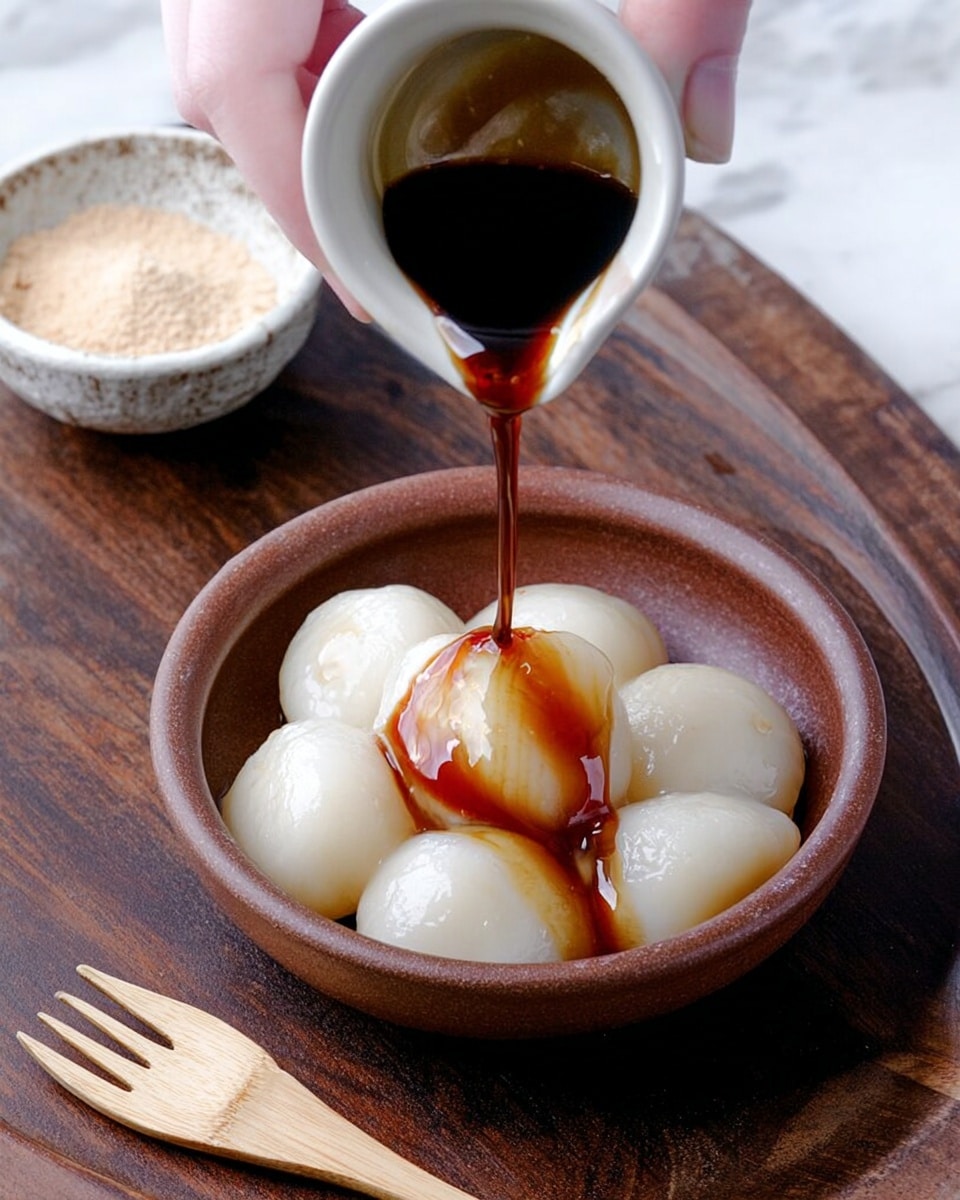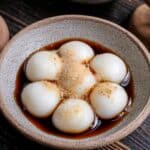If you’re searching for a dessert that packs delightful chewiness with an enchanting blend of sweet and nutty flavors, look no further than the Shiratama Dango (Japanese Rice Dumplings) with Kuromitsu and Kinako Recipe. These pillowy soft, chewy rice dumplings have been a beloved treat in Japan for generations, offering a unique texture that’s utterly addictive. Paired with a luscious kuromitsu syrup, which is a rich, molasses-like brown sugar syrup, and dusted with fragrant roasted soybean powder known as kinako, this dessert is comfort and elegance wrapped into one. Whether you’re a seasoned fan of Japanese sweets or new to mochi-style treats, this recipe is a warm invitation to savor something different and truly special.
Ingredients You’ll Need

The magic of this Shiratama Dango (Japanese Rice Dumplings) with Kuromitsu and Kinako Recipe lies in its simplicity. You only need a handful of ingredients, each playing an essential role: the glutinous rice flour creates that perfect chewy texture, the water brings the dough together, kuromitsu adds a deep, caramel-like sweetness, and kinako brings a toasty, nutty finish. Let’s look at these key players:
- Glutinous rice flour (shiratamako): The star ingredient that delivers the classic chewy, silky texture of dango.
- Water: Carefully added to create a soft, pliable dough that’s easy to shape.
- Kuromitsu (dark brown sugar syrup): This syrup adds a rich, warm sweetness that beautifully complements the dumplings.
- Kinako (roasted soybean powder): Adds an irresistible nutty aroma and a subtle depth of flavor.
You’ll find the full ingredient list, instructions, and print option in the recipe card below.
How to Make Shiratama Dango (Japanese Rice Dumplings) with Kuromitsu and Kinako Recipe
Step 1: Prepare the Dough
Start by measuring out 100 grams of glutinous rice flour (shiratamako) into a bowl and giving it a quick whisk to break up any lumps. Pour approximately half of the 90 ml of water into the flour, then mix with a spatula. Gradually add the remaining water little by little, kneading after each addition until you have a smooth, pliable dough. It should have the soft, flexible texture that’s often compared to an earlobe — a great test for perfect chewiness!
Step 2: Shape the Dumplings
Cut the dough into two equal portions. Roll each portion into a cylinder, then slice each into 10 even pieces. Roll these into balls with your palms, taking care to form smooth, round dumplings. Gently press a small dent into the center of each ball; this helps them cook evenly and adds a charming homemade touch. Lay the dumplings on baking parchment to prevent sticking.
Step 3: Cook the Shiratama Dango
Bring a pot of water to a rolling boil. Carefully drop the shaped dango into the boiling water and gently nudge them with chopsticks or a spoon to keep them from sticking to the bottom. When the dumplings float to the surface, continue cooking for about one more minute to ensure they are perfectly cooked through.
Step 4: Chill in Ice Water
Once cooked, promptly scoop the dumplings out with a mesh spoon and transfer them to a bowl of ice-cold water. This step is crucial to stop the cooking process and keep that delightful chewy texture. Leave the dumplings to cool for 5 to 10 minutes, then drain them well before serving.
Step 5: Plate and Add Toppings
Arrange the chilled dumplings on a serving dish. Generously drizzle with kuromitsu, allowing the syrup’s deep molasses flavor to soak into the dumplings. Finally, sprinkle kinako powder on top, adding a toasty, nutty contrast that’s utterly irresistible. Your delightful bowl of Shiratama Dango (Japanese Rice Dumplings) with Kuromitsu and Kinako is now ready to enjoy!
How to Serve Shiratama Dango (Japanese Rice Dumplings) with Kuromitsu and Kinako Recipe

Garnishes
For an extra touch of elegance and texture, you can add a few sesame seeds, a dollop of sweet red bean paste (anko), or even a small scoop of matcha ice cream alongside your dango. Each addition brings another layer of authentic Japanese flavors and a beautiful presentation.
Side Dishes
Serve your Shiratama Dango as a perfect light dessert after a meal featuring sushi, teriyaki, or tempura. Its mild sweetness provides a lovely balance and a refreshing end to a savory spread. Alternatively, enjoy it with green tea or hojicha for a cozy afternoon indulgence.
Creative Ways to Present
Try threading the dumplings onto wooden skewers for a playful dango kabob! You can also arrange them on a platter with small bowls of kuromitsu and kinako on the side, letting everyone customize their own sweetness and nutty sprinkle. For special occasions, incorporate seasonal fruits like sliced strawberries or kiwi around the dumplings for a colorful, festive touch.
Make Ahead and Storage
Storing Leftovers
If you have any leftover Shiratama Dango, place them separated on a tray lined with parchment paper to prevent sticking. Cover loosely and store in the refrigerator for up to one day. Because the texture is best fresh, try to enjoy them quickly for the most satisfying chew.
Freezing
For longer storage, freeze the dumplings after spreading them out on a baking tray for an initial hour to freeze solid. Then transfer the frozen dango to a sealable freezer bag and keep them for up to one month. This method helps preserve their texture and flavor remarkably well.
Reheating
To enjoy frozen dumplings, thaw them gently in the microwave for 40 to 50 seconds at 600W or submerge them in a bowl of warm water until soft. You can refresh them quickly by dipping them into hot water for a few seconds before serving to regain their tender chewiness.
FAQs
What is the difference between shiratamako and mochiko?
Shiratamako and mochiko are both glutinous rice flours but differ slightly in texture and water absorption. Shiratamako yields softer and chewier dumplings, ideal for traditional dango, while mochiko produces a firmer texture. For this recipe, shiratamako is preferred for its classic softness.
Can I make kuromitsu syrup at home?
Absolutely! Kuromitsu is easy to make by simmering dark brown sugar with water until it thickens into a syrup. It imparts a rich molasses flavor that’s integral to authentic Japanese sweets like this Shiratama Dango recipe.
What does kinako taste like?
Kinako is roasted soybean flour with a mildly sweet, nutty, and slightly earthy flavor. It adds a wonderful depth to dishes and pairs beautifully with mochi’s neutral taste.
Are Shiratama Dango gluten-free?
Yes! Shiratama dango made from 100% glutinous rice flour is naturally gluten-free, making it a great dessert for those who avoid gluten. Just be sure your kuromitsu syrup and kinako do not contain any gluten additives.
How long can I keep Shiratama Dango before it loses its texture?
For the best chewy texture and flavor, eat the dango within a few hours after cooking. Refrigeration can cause them to harden, but freezing and proper reheating can help retain the delightful softness.
Final Thoughts
There’s something truly magic about this Shiratama Dango (Japanese Rice Dumplings) with Kuromitsu and Kinako Recipe. It’s simple yet sophisticated, comforting yet refreshingly unique. Once you master this recipe, you’ll have a lovely little treasure of Japanese tradition to share with friends and family. So grab your ingredients, have fun shaping these tender dumplings, and indulge in every sweet, nutty bite. Your taste buds will thank you!
PrintShiratama Dango (Japanese Rice Dumplings) with Kuromitsu and Kinako Recipe
Shiratama Dango are traditional Japanese chewy rice dumplings made from glutinous rice flour. Soft and slightly sweet, these mochi balls are boiled until they float and typically served with a drizzle of rich dark brown sugar syrup (kuromitsu) and a dusting of roasted soybean powder (kinako). This simple recipe yields a delightful dessert or snack perfect for any season.
- Prep Time: 10 minutes
- Cook Time: 5 minutes
- Total Time: 15 minutes
- Yield: 3 servings (about 20 dumplings)
- Category: Dessert
- Method: Boiling (Stovetop)
- Cuisine: Japanese
- Diet: Gluten Free
Ingredients
For Shiratama Dango (with Shiratamako)
- 100 g glutinous rice flour (shiratamako)
- 90 ml water (approx)
Alternative Dough (with Mochiko)
- 90 g glutinous rice flour (mochiko)
- 10 g potato starch (katakuriko) or tapioca starch
- 80 ml water (approx)
Toppings
- Dark brown sugar syrup (kuromitsu), to taste
- Roasted soybean powder (kinako), to taste
Instructions
- Prepare Dough: Measure 100 g glutinous rice flour (shiratamako) into a bowl and whisk briefly. Pour half of the 90 ml water into the bowl. (If using mochiko, combine 90 g mochiko and 10 g potato starch in a bowl, whisk, then add half of 80 ml water.)
- Form Dough: Mix with a spatula and gradually add the remaining water little by little, kneading between additions until a smooth, pliable dough forms with the texture similar to an earlobe. Note you may not need all the water.
- Shape Dumplings: Cut the dough in half and roll each into cylinders. Slice each cylinder into 10 equal pieces and roll into balls. Press the center of each ball to make a slight dent. For larger batches, adjust dividing accordingly.
- Prevent Sticking: Arrange the formed dumplings on baking parchment to stop them from sticking to surfaces.
- Boil Dumplings: Bring a pot of water to a boil. Gently place the dumplings into the boiling water, nudging with chopsticks to prevent sticking to the bottom. Boil until the dumplings float to the surface, approximately 3 minutes.
- Cook Through: Once all dumplings float, set a timer for 1 more minute to ensure they are fully cooked. Meanwhile, prepare a bowl of ice-cold water.
- Cool Dumplings: Turn off the heat and use a mesh spoon to transfer the cooked dumplings into the ice water bath. Let them cool for 5 to 10 minutes to firm up their texture.
- Serve: Drain the dumplings and serve topped with dark brown sugar syrup (kuromitsu) and a sprinkling of roasted soybean powder (kinako). Enjoy immediately.
- Store Leftovers: If you have leftovers, spread them out on a baking paper-lined tray and freeze for 1 hour. Then transfer to a sealable freezer bag and consume within 1 month. To reheat, thaw in the microwave for 40-50 seconds at 600W or slowly in a bowl of water.
Notes
- If substituting mochiko for shiratamako, add potato starch to maintain the correct texture.
- Do not over-add water to the dough; it should be soft but not sticky.
- Pressing a dent into each ball helps the dumplings cook evenly and hold toppings.
- The ice water bath stops cooking and firms the dumplings, ensuring the perfect chewy texture.
- Freezing leftovers prevents dumplings from sticking together and preserves freshness.
- Kuromitsu and kinako can be adjusted to taste or substituted with other sweet syrups and toppings.








